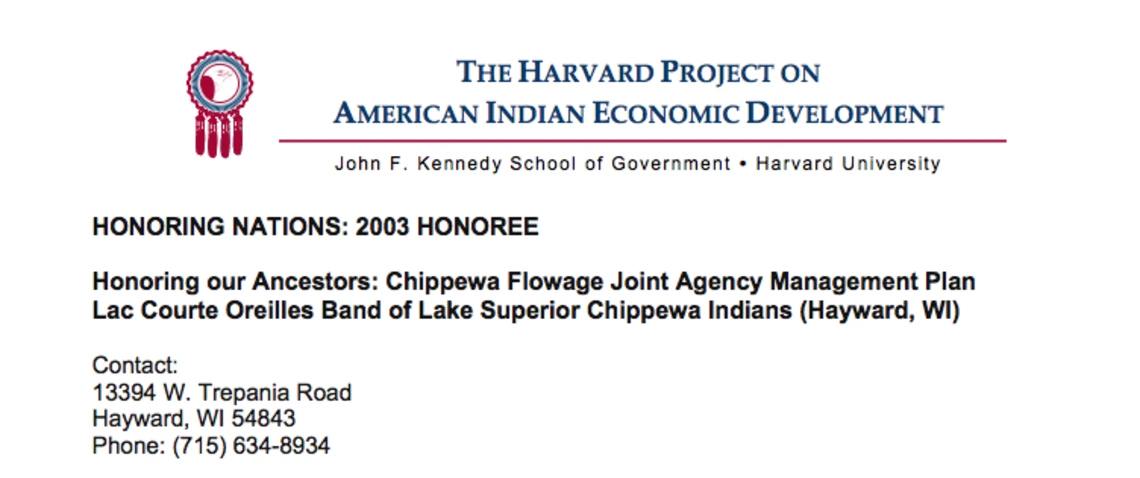The Joint Agency Management Plan brings together three governments — the Lac Courte Oreilles Band, the State of Wisconsin, and the US Department of Agriculture Forest Service — to co-manage the Chippewa Flowage, a 15,300-acre reservoir created in 1923 that inundated a tribal village. Taking into account the cultural, aesthetic, and economic value of the Flowage, the plan provides a framework for the three parties to coordinate management activities and decisions through a consensus-based approach.
Additional Information
"Honoring Our Ancestors: The Chippewa Flowage Joint Agency Management Plan." Honoring Nations: 2003 Honoree. Harvard Project on American Indian Economic Development, John F. Kennedy School of Government, Harvard University. Cambridge, Massachusetts. 2004. Report.




